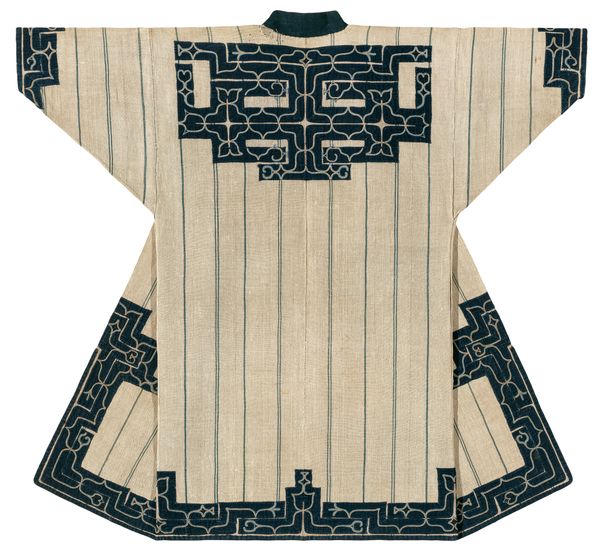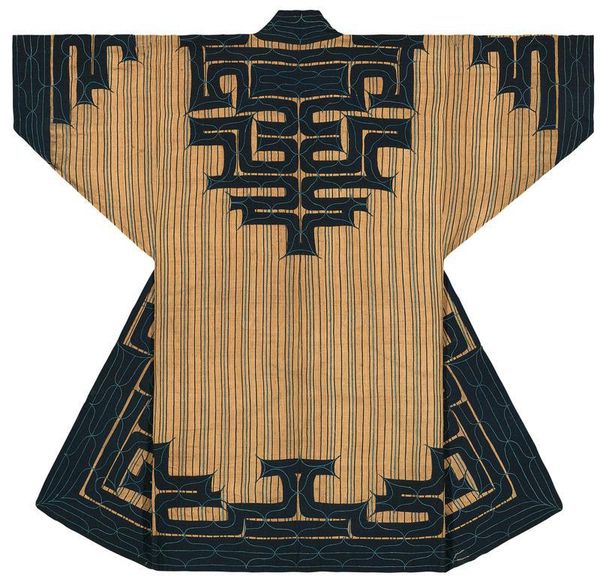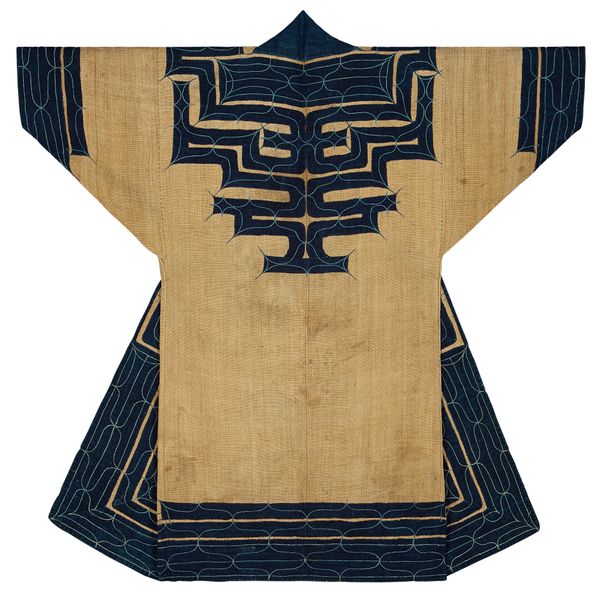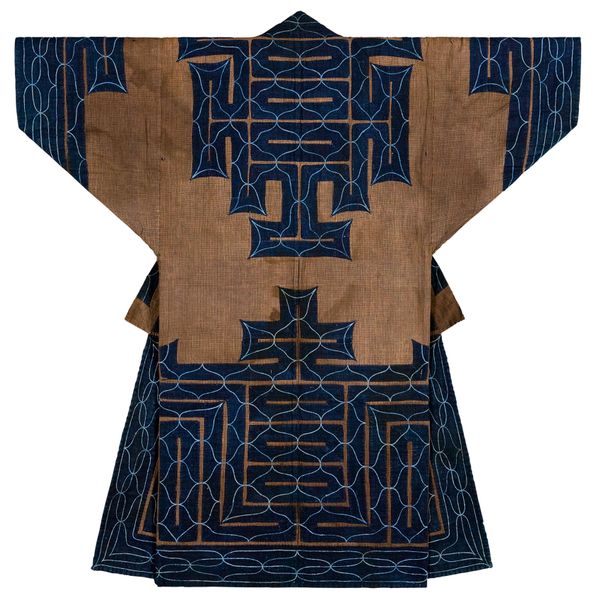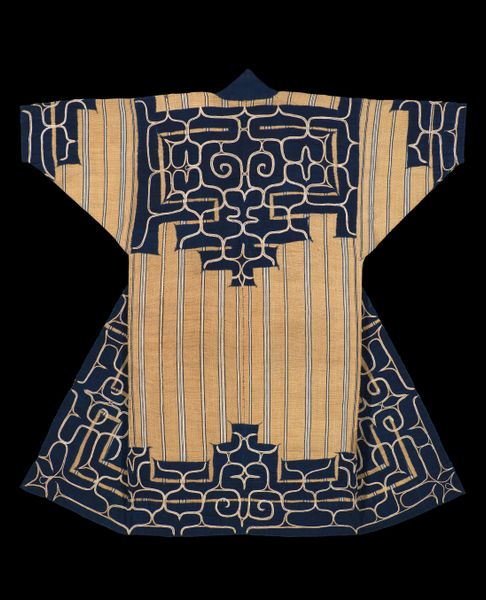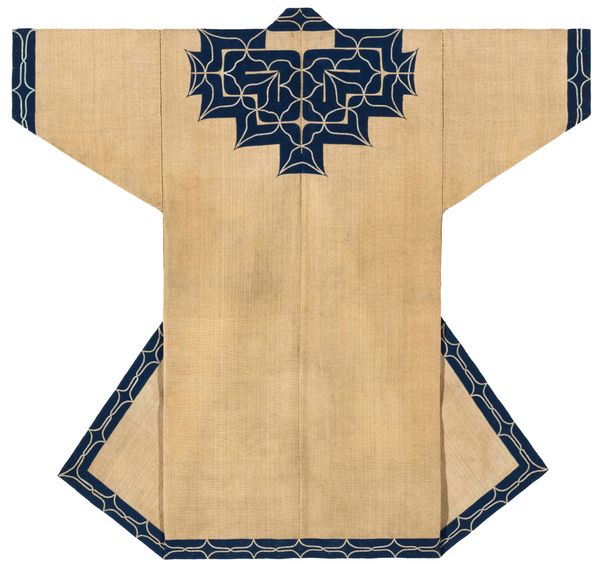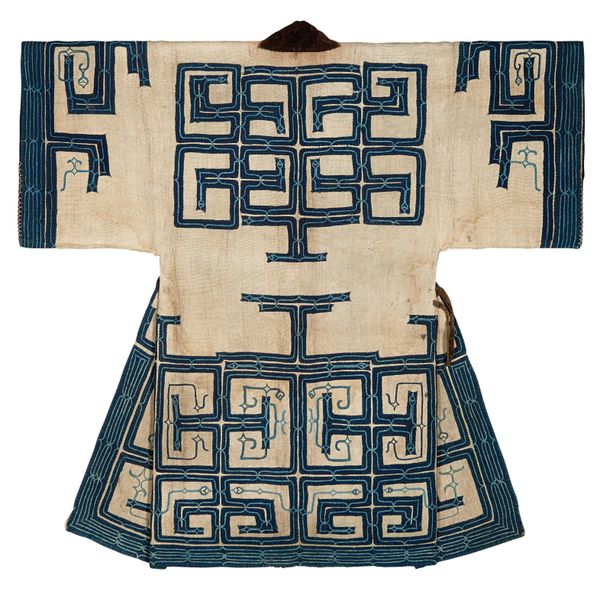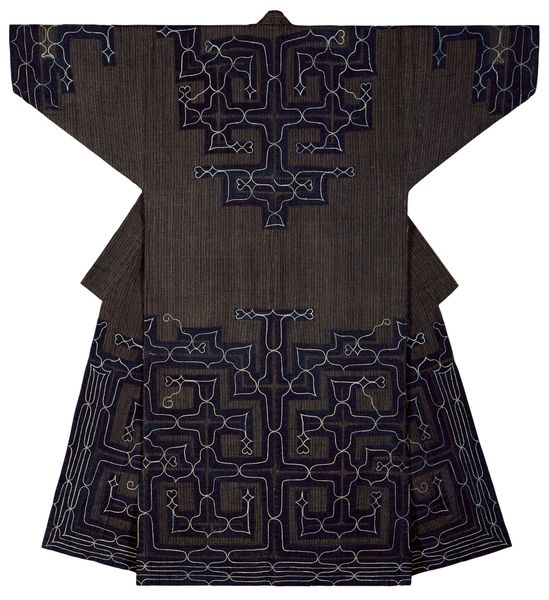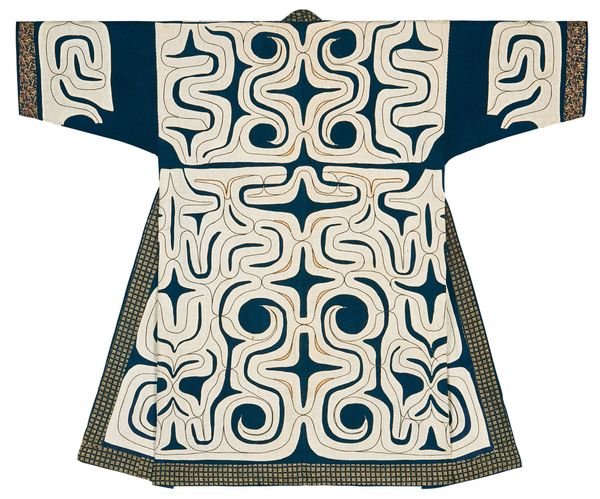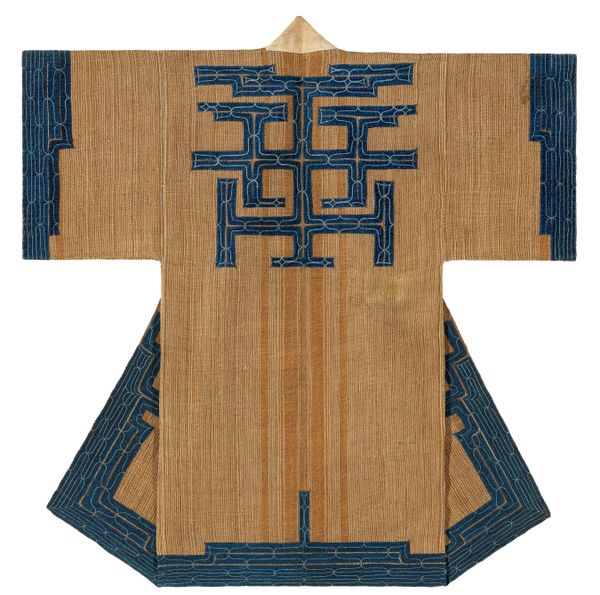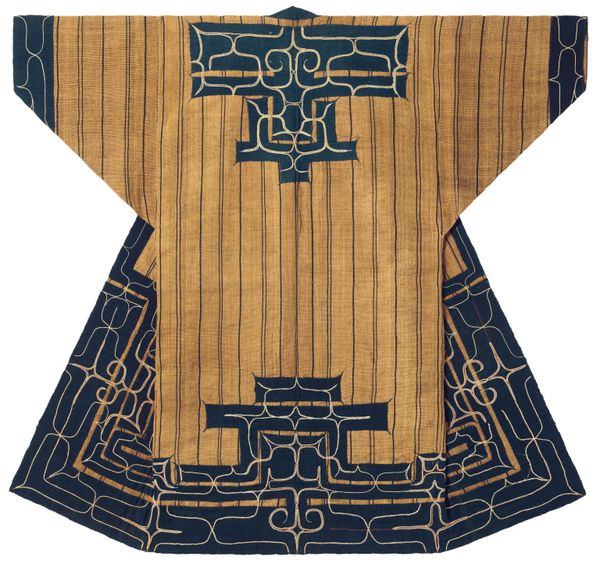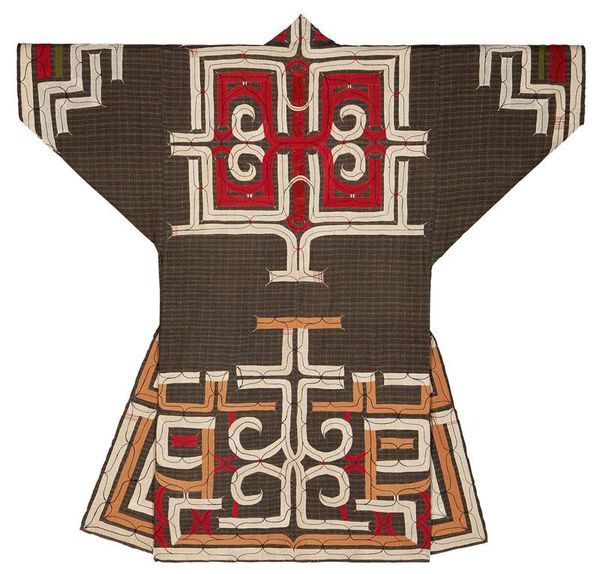
weaving, textile
#
pattern heavy
#
pattern
#
asian-art
#
weaving
#
textile
#
fashion and textile design
#
japan
#
repetitive shape and pattern
#
repetition of pattern
#
clothing photo
#
pattern repetition
#
textile design
#
decorative-art
#
imprinted textile
#
layered pattern
#
funky pattern
Dimensions: 45 × 49 1/2 in. (114.3 × 125.73 cm) (overall)
Copyright: Public Domain
Editor: Here we have an Attush robe with altered sleeves, made around the late 19th century. It’s part of the collection at the Minneapolis Institute of Art. Looking at the textile and weaving, it appears quite graphic, with a lot of pattern. How do you see this robe? Curator: I’m interested in the material transformation at play here. What was the process of creation, and what can it tell us about labor and production at the time? Consider the indigenous Ainu people of Japan who made this robe. The geometric designs weren't merely decorative; they had protective functions in Ainu belief. The "altered sleeves" tag suggests adaptations—perhaps for trade, for different uses, or a change in social context? Editor: That’s fascinating! So, it’s not just about the final aesthetic, but how the robe came to be, who made it, and what their beliefs were? Curator: Exactly. Think about the weaving techniques, the source of the textiles, the very *hands* that created this. This wasn't "high art" in the Western sense, but a utilitarian garment imbued with cultural meaning, potentially produced through collaborative labor. And later, we have evidence of alteration… Why was it changed? Editor: Perhaps it was modified for someone else? The size, style... Curator: Precisely. Who eventually consumed this garment and for what purpose? How might the Ainu producers view that subsequent consumption? Focusing on the "means of production," consumption, and social adaptation encourages us to think about these challenging art-historical boundaries. Editor: I see, viewing the Attush robe not just as a piece of art, but as a product of cultural exchange and a story of labor and transformation. Curator: Precisely. What we have before us goes far beyond its visual design.
Comments
No comments
Be the first to comment and join the conversation on the ultimate creative platform.
